This post may contain affiliate links. Please read my privacy policy.
I can’t get enough of the rich flavors in Malaysian chicken curry! This easy curry chicken recipe, with tender chicken, hearty potatoes, and aromatic spices, is the perfect comfort food. With simple ingredients like curry powder and coconut milk, it’s a quick, flavorful meal with no hassle.
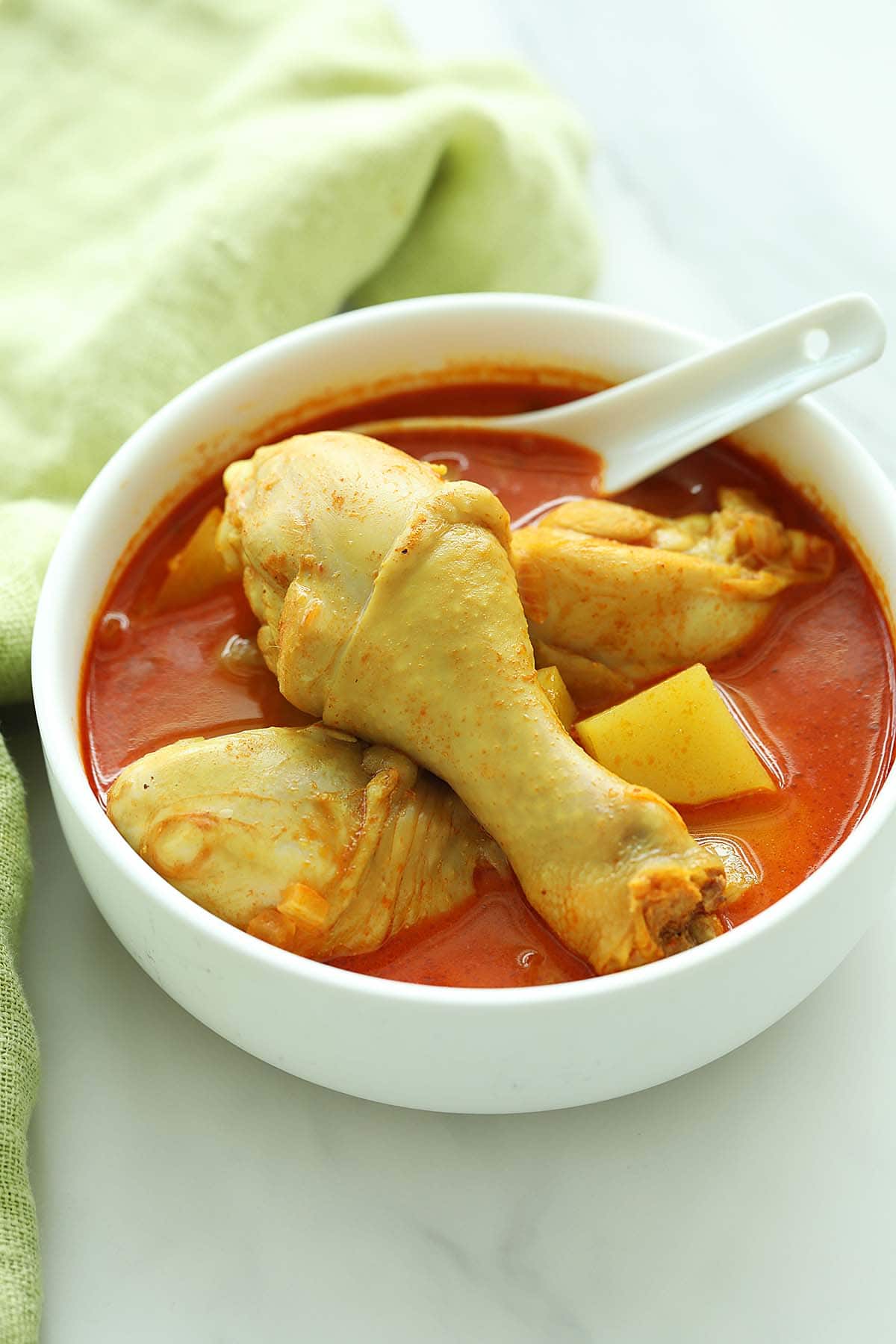
Table of Contents
- Curry Chicken Recipe
- The Best Homemade Curry
- Ingredients You’ll Need
- Recipe Variation And Addition
- How To Make Curry Chicken
- Secret Ingredients Of Good Curry Chicken
- Secrets To The Best Malaysian Curry
- Frequently Asked Questions
- What To Serve With This Recipe
- Other Recipes You Might Like
- Malaysian Chicken Curry Recipe
Curry Chicken Recipe
I grew up eating all sorts of curries, and one of my favorites is chicken curry. It’s a comforting dish that warms me up whenever I feel cold in the winter months, much like Cantonese Beef Stew or one-pot meals such as Chinese Hot Pot and Japanese Nabe.
Malaysian chicken curry, known as “kari ayam” in Malay language, holds a special place in my heart and stomach. Malaysian curry is incredibly delicious and immediately warms up my body. The tantalizing smell wafting through the kitchen is enough to make my stomach rumble and my mouth water. Don’t forget to check out my tips and tricks below to make your chicken curry the best it can be!
The Best Homemade Curry
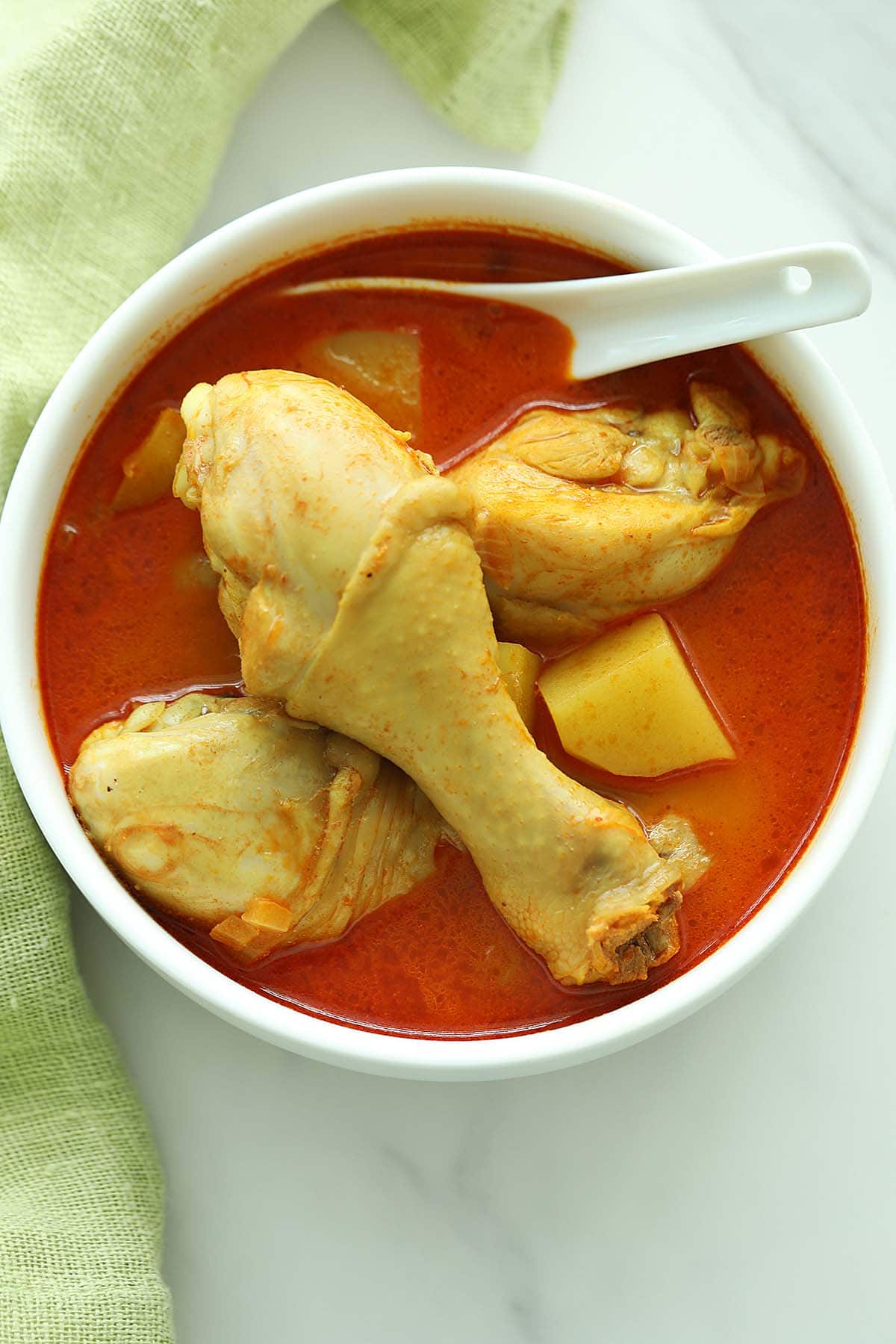
Homemade curries are incredibly easy to make. I love preparing a large pot so I can enjoy it throughout the day, and there’s always enough for leftovers the next day. They pair perfectly with steamed rice or Malaysian Nasi Lemak.
Overnight curries taste even better as the flavors develop. The meat becomes tender, and the sauce soaks up all the deliciousness of the spices. I like to dip Naan bread, Chapati, Roti Canai, or buns into the curry sauce—it feels like being in curry heaven!
Ingredients You’ll Need
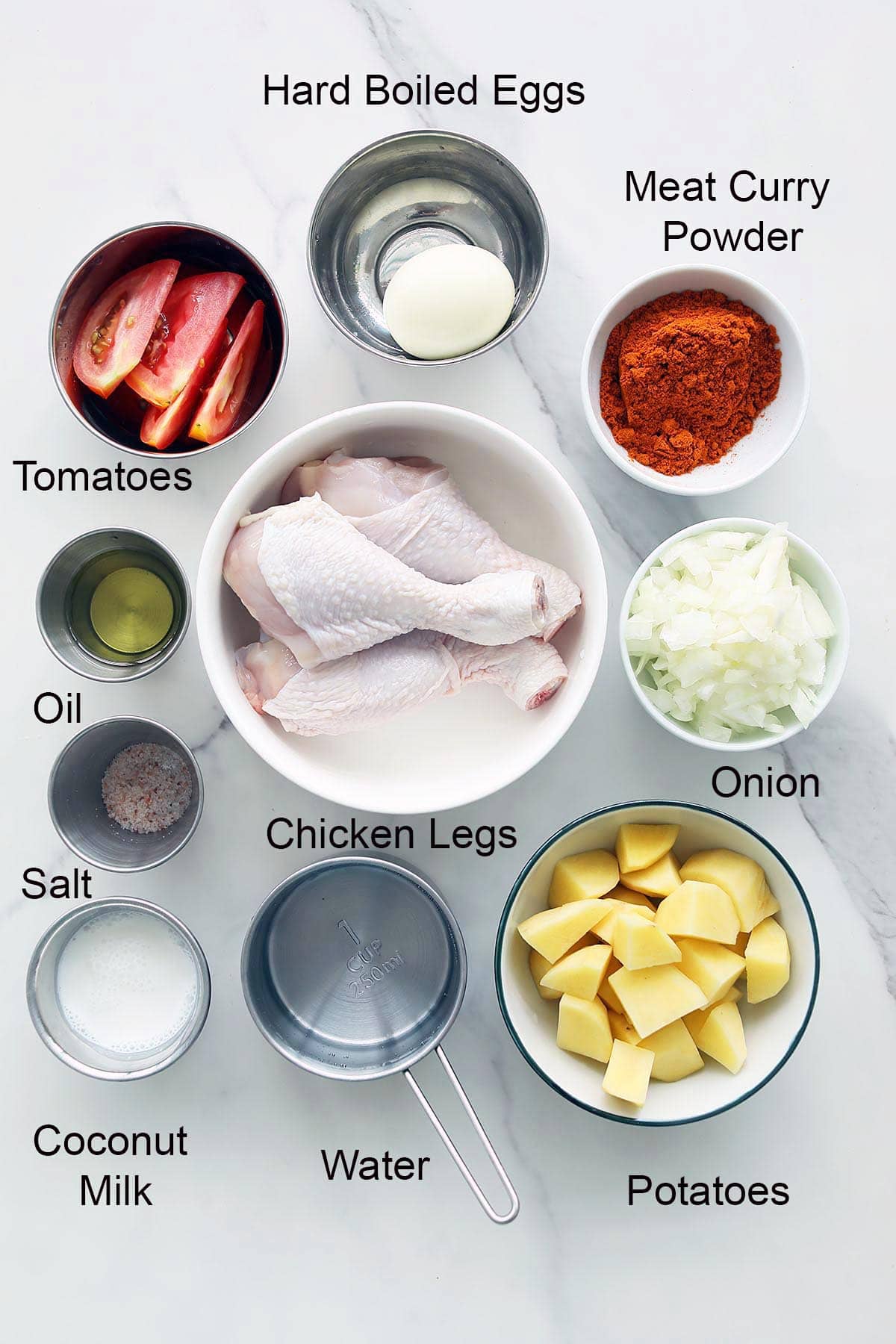
This simple chicken curry recipe is very easy to make with readily available ingredients. It calls for ingredients that you can find at any regular supermarket.
- Chicken: You may use the whole chicken, chicken leg quarters, thighs, legs or breasts. I recommend chicken legs (drumsticks) because you don’t have to chop them into pieces, and they are always tender and soft after cooking.
- Curry powder: There are two types of curry powder, for meat and seafood. For this recipe, choose meat curry powder.
- Coconut cream or coconut milk: If you like a creamier curry sauce, opt for coconut cream which is not diluted by water.
- Onion: Diced onions are easy to break down, imparting their aroma and natural sweetness to the chicken curry.
- Potatoes: This is a must in traditional Malay-style kari ayam. Potatoes make the curry a more substantial dish, and the cooked potatoes also help thicken up the curry sauce.
- Optional hard-boiled eggs and tomatoes: These two ingredients are optional, but I love adding them to my recipe. Tomatoes lend a fresher taste and cut down on the heaviness of the curry, while hard-boiled eggs are just a great accompaniment to the overall dish.
Please refer to the recipe card at the bottom of this post for full details on each ingredient.
Recipe Variation And Addition
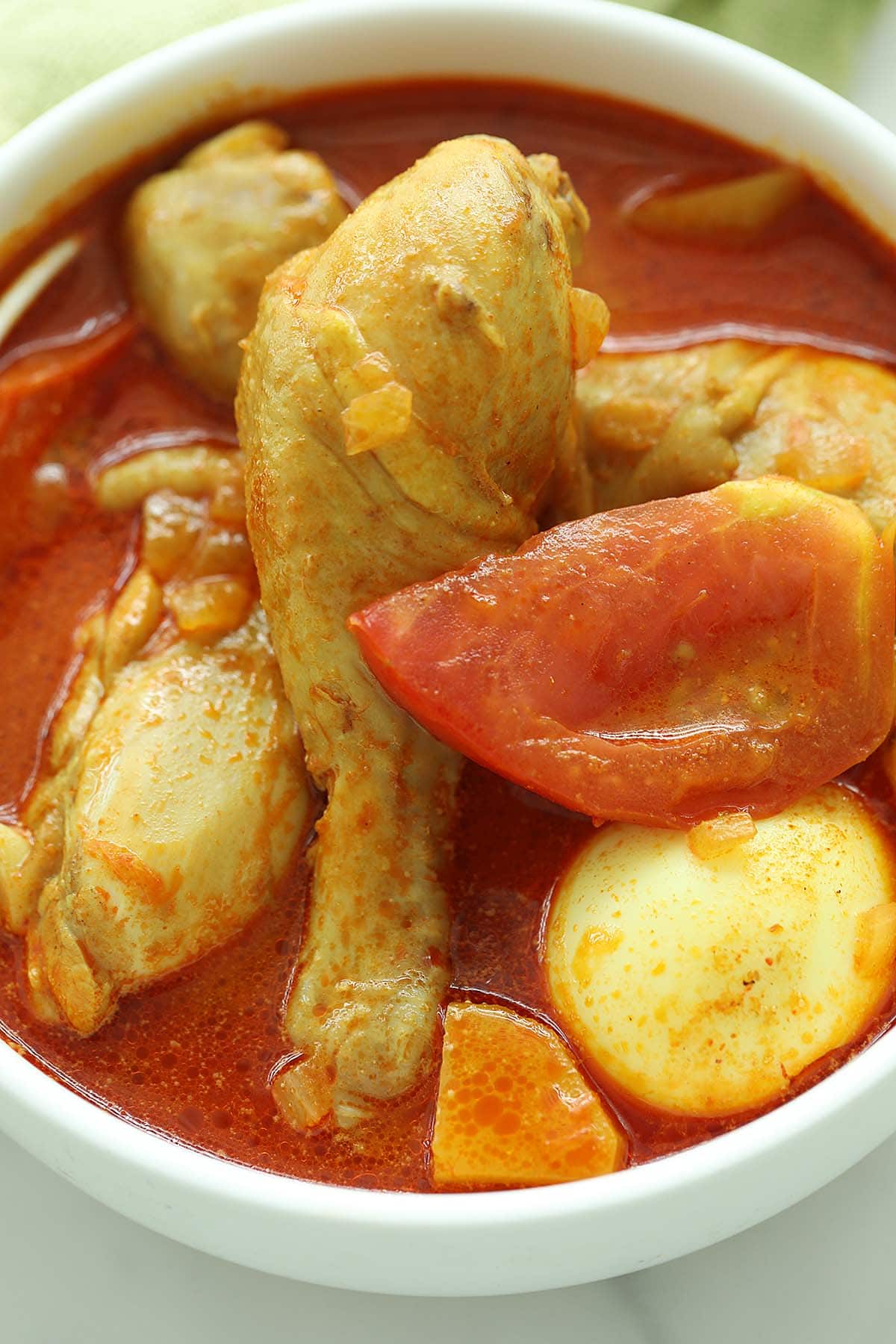
In this photo, you can see hard-boiled eggs and tomatoes added to the curry—proof of how flexible chicken curry can be! It’s so easy to make it your own with extras like carrots, peas, or cauliflower.
Want to take the flavor up a notch? Toss in some mint, curry leaves, or mustard seeds. They’ll bring out amazing aromas in the curry sauce.
The added veggies not only make it heartier but also turn it into a full, satisfying meal, especially when served with steamed rice.
How To Make Curry Chicken
This easy coconut chicken curry recipe involves four (4) quick and easy steps.
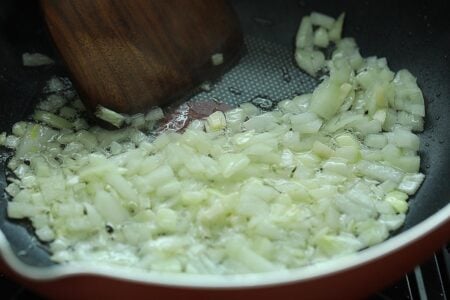
Pour some oil into a pot or a pan and heat it up until it’s nice and hot. Toss in the diced onions and stir-fry them until they soften and start smelling really good—aromatic! It’s the first step to getting that amazing flavor going.
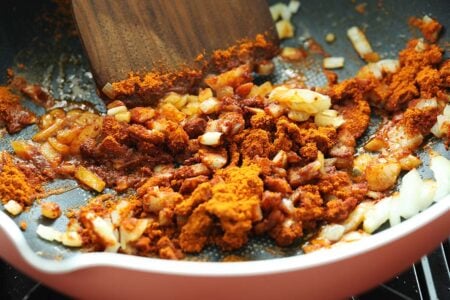
Toss in some curry powder with those onions and give it a quick stir. You’ll know it’s ready when you start to really smell that delicious curry aroma—always a good sign!
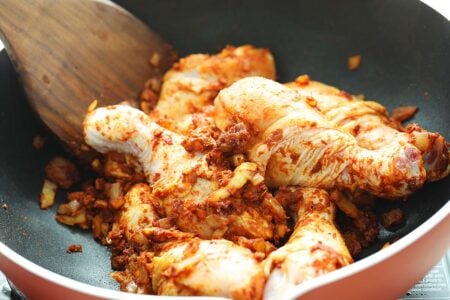
Toss in the chicken and stir everything together with the curry powder and onions. Cook for about a minute until it’s all nicely combined.
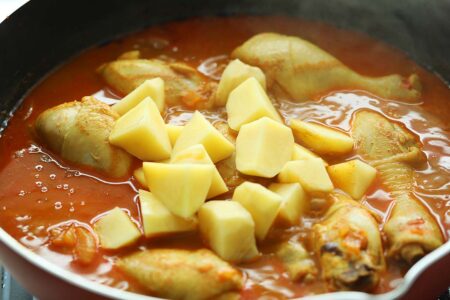
Pour in some water, bring the curry to a boil. Then, lower the heat and add the potatoes—plus tomatoes and hard-boiled eggs if you’re using them. Pop the lid on and let it simmer for about 30 minutes, or until the chicken is nice and tender. Finally, stir in the coconut milk/coconut cream and season with salt to taste. Serve it hot with steamed rice.
Pro Tip: If you find the curry too watery, simply simmer it longer until it reaches your desired thickness.
Secret Ingredients Of Good Curry Chicken
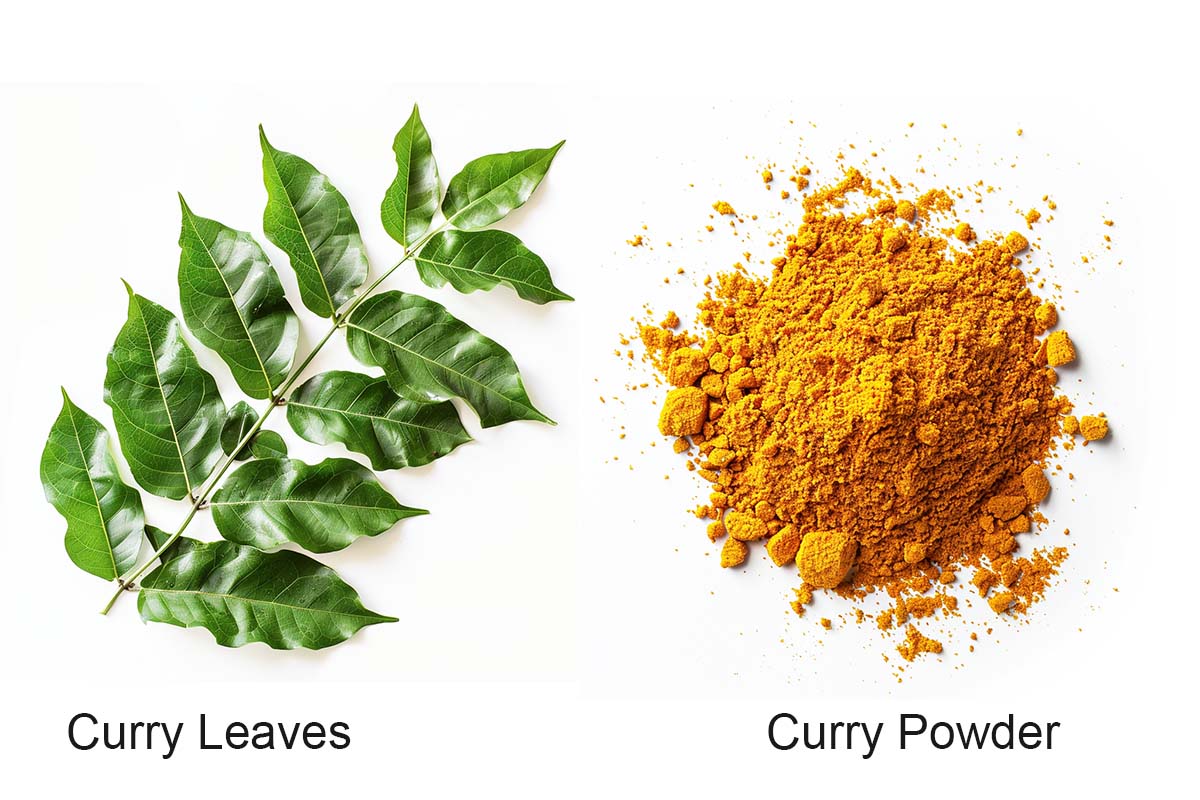
What’s the secret to a good curry?
For me, the key to the best recipe lies in two ingredients:
- Curry powder. As a Malaysian, I always buy curry powder packets from Malaysia. Two brands I strongly recommend are Baba’s meat curry powder or Alagappa meat curry powder. They’re authentic, affordable, and can be stored in an airtight container for a long time.
- Curry leaves. Curry leaves are aromatic leaves used in South Asian and Southeast Asian cooking to add flavor to dishes like curries, soups, and stews. You may buy them at Indian grocery stores in the US.
Another ingredient that elevates your curry to the next level is lemongrass. Adding 2 stalks of pounded lemongrass in step 1 during the cooking process will impart a citrusy and lemony note to the curry.
Secrets To The Best Malaysian Curry
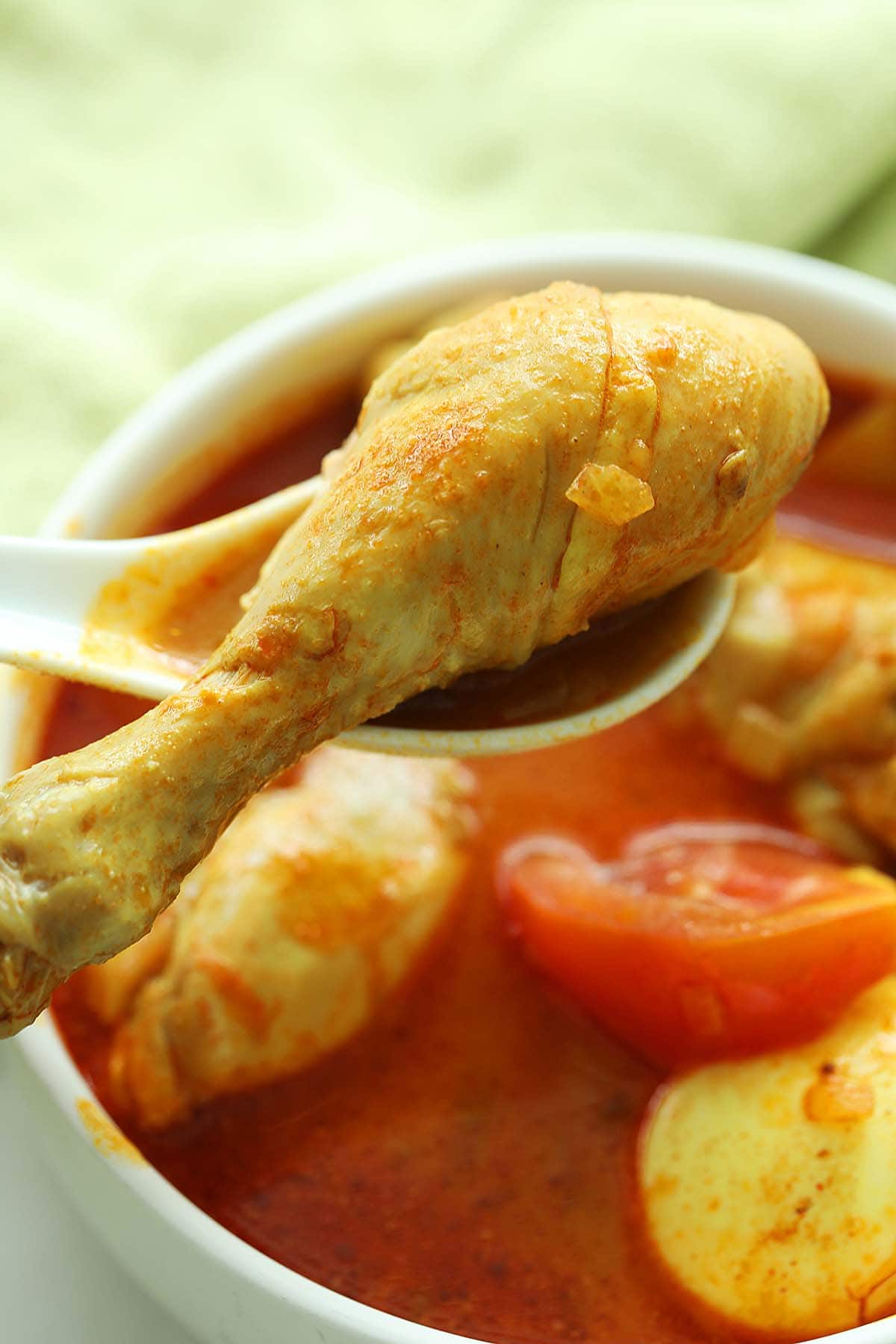
For a delicious pot of curry chicken with tender, soft meat and a flavorful curry soup, follow these expert tips below:
- I always choose bone-in, skin-on chicken, like chicken leg quarters (thighs and drumsticks), for added flavor and juiciness when making curry chicken. I avoid using boneless, skinless chicken meat because it doesn’t provide the same richness in flavor.
- If I’m using a whole chicken, I make sure to chop it into equal-sized pieces so it cooks evenly.
- When it comes to potatoes, if I’m using Russet potatoes, I cut them into larger chunks. Since Russets are starchy and fluffy, they can fall apart in stews or curries. If possible, I opt for waxy potatoes like Yukon Gold, since they hold up better in this recipe.
- I like to simmer curry slowly over low heat to allow the flavors to blend together. This also helps the sauce thicken to my preferred consistency. If you find the curry too watery, simply simmer it longer until it reaches your desired thickness.
- I add the coconut milk/coconut cream towards the end of cooking, stirring gently to combine it well with the curry sauce and prevent curdling.
Frequently Asked Questions
Absolutely, you can! In fact, it’s a time-saving method I often use. Simply place all the ingredients except the coconut milk in the crockpot before you leave home. Cook on the lowest setting for 4-6 hours. When you return, stir in the coconut milk, and dinner is served. If using a crockpot for this recipe, be sure to cut your potatoes into larger chunks to prevent them from breaking down completely during the slow cooking process.
Yes, you can freeze it for up to two weeks, but I don’t recommend freezing it beyond that. Store it in freezer-safe containers. Thaw it overnight in the refrigerator or for a few hours at room temperature before reheating it on the stove or in the microwave.
To lessen the spiciness of your curry, reduce the amount of curry powder used. Additionally, you can incorporate more coconut milk or opt for coconut cream to counterbalance the heat from the curry powder.
Yes, you can, but I highly recommend using dark meat such as thighs and legs for this recipe. Chicken breasts have a tendency to become dry, especially after cooking on low heat for 30 minutes. However, if you prefer to use chicken breast meat, you may reduce the cooking time to 15-20 minutes to prevent them from becoming too dry.
Follow the recipe as is, but substitute chicken with plant-based proteins like tofu or tempeh. If using tofu, opt for firm tofu to prevent it from falling apart during cooking. Avoid soft tofu or silken tofu as they may disintegrate. Besides tofu and tempeh, you can incorporate a variety of vegetables such as cabbage, carrot, mushroom, green pea, eggplant, etc.
This recipe is only 288 calories per serving.
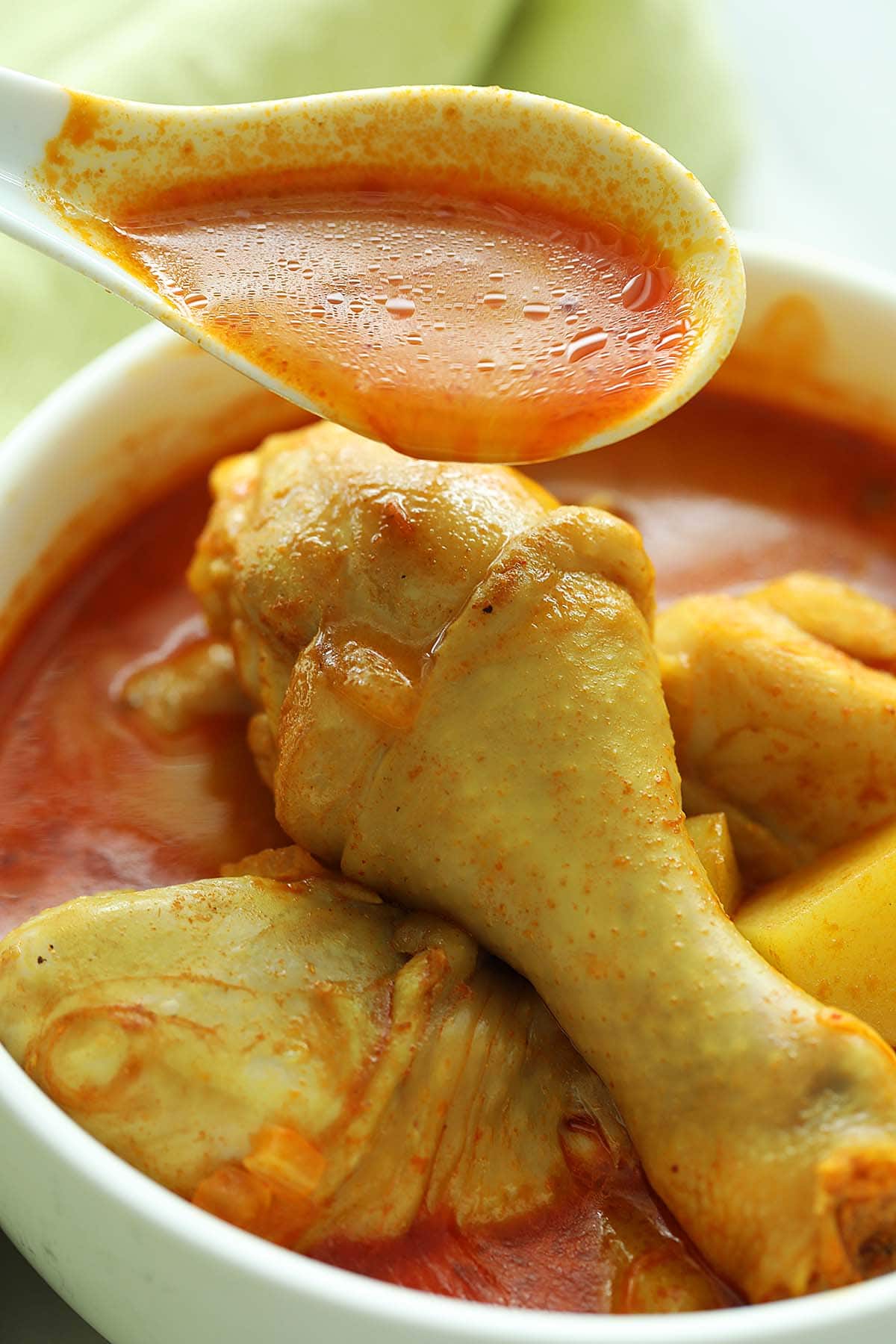
What To Serve With This Recipe
This curry goes well with rice or roti. Any flat breads will be great to soak up the soup or sauce.
I hope you enjoy this post as much as I do. If you try my recipe, please leave a comment and consider giving it a 5-star rating. For more easy and delicious recipes, explore my Recipe Index, and stay updated by subscribing to my newsletter and following me on Facebook, Pinterest, and Instagram for new updates.
Other Recipes You Might Like
- Squid Curry
- Dry Chicken Curry
- Chicken Curry with Potatoes
- Ayam Masak Merah (Chicken in Spicy Tomato Sauce)
- Devil’s Curry

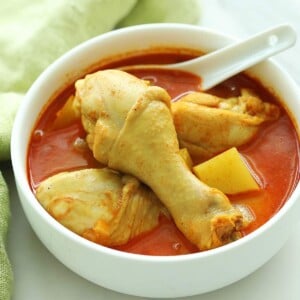
Malaysian Chicken Curry
Ingredients
- 2 tablespoons oil
- ½ onion, diced
- 1 oz (30g) curry powder , for meat
- 1 ½ lbs (750g) chicken thighs, or legs or whole chicken
- 2 cups water
- 2 small potatoes, Yukon Gold preferred, peeled and cut into wedges
- 1 big tomato, cut into wedges, optional
- 4 hard-boiled eggs, optional
- ½ cup coconut cream or coconut milk, coconut cream preferred
- 1 teaspoon salt, or more to taste
Instructions
- Add the oil to a pot or pan and heat until hot. Add the diced onions and stir-fry until softened and aromatic.
- Add the curry powder to the onions and stir quickly until the aroma of the curry powder is released.
- Add the chicken and stir well to combine it with the curry powder and onions, cooking for about 1 minute.
- Add the water to the pot or pan and bring the curry to a boil. Reduce the heat to low and add the potatoes. (Add the tomatoes and hard-boiled eggs, if using.) Cover the pot and let it simmer for about 30 minutes, or until the chicken is tender. If you find the curry too watery, simply simmer it longer until it reaches your desired thickness. Stir in the coconut cream/coconut milk and salt to taste, and combine well. Serve hot with steamed rice.
Notes
- 1 ½ lbs of chicken legs = 6 to 7 legs
- I always choose bone-in, skin-on chicken, like chicken leg quarters (thighs and drumsticks), for added flavor and juiciness when making curry chicken. I avoid using boneless, skinless chicken meat because it doesn’t provide the same richness in flavor.
- If I’m using a whole chicken, I make sure to chop it into equal-sized pieces so it cooks evenly.
- When it comes to potatoes, if I’m using Russet potatoes, I cut them into larger chunks. Since Russets are starchy and fluffy, they can fall apart in stews or curries. If possible, I opt for waxy potatoes like Yukon Gold, since they hold up better in this recipe.
- I like to simmer curry slowly over low heat to allow the flavors to blend together. This also helps the sauce thicken to my preferred consistency. If you find the curry too watery, simply simmer it longer until it reaches your desired thickness.
- I add the coconut cream/coconut milk towards the end of cooking, stirring gently to combine it well with the curry sauce and prevent curdling.
Nutrition
Nutrition information is automatically calculated, so should only be used as an approximation.
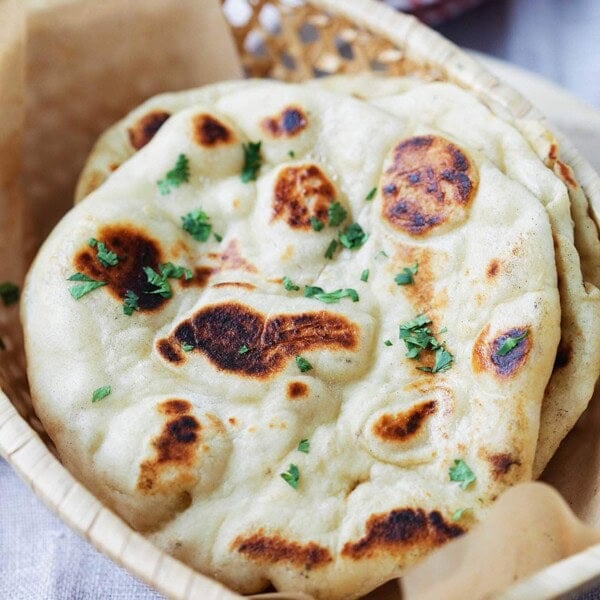
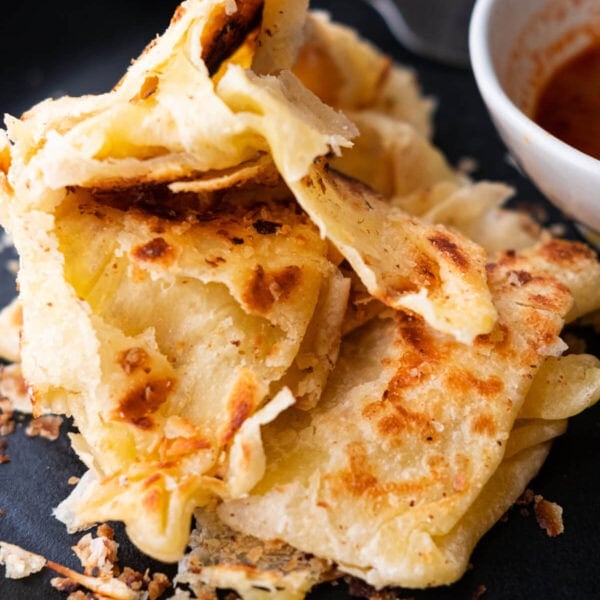
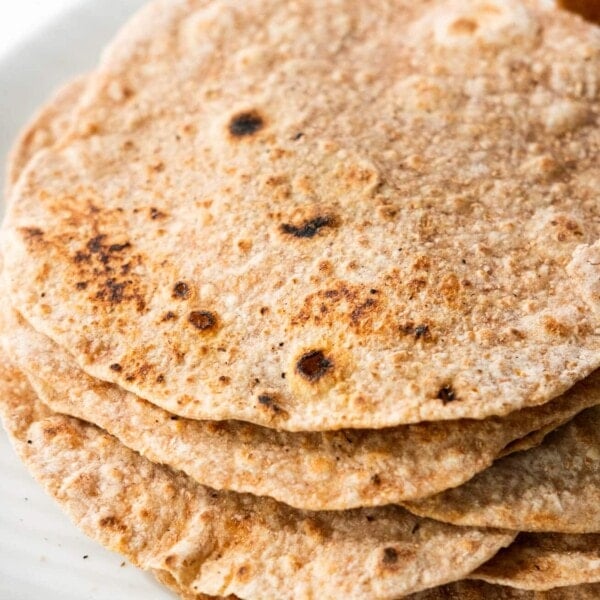
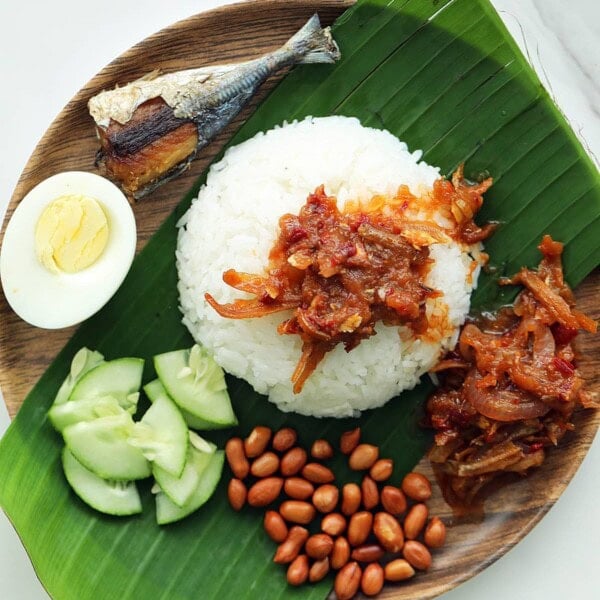






A fantastic recipe and very easy to make. :)
Hi, what type of potatoes do you use for the curry chicken? e.g. Idaho, Russet, etc
Doesn’t matter. I use Yukon Gold.
If I wish to cook half a chicken, do I half the ingredients listed ?
Yes, you can do that.
Yummy! I love curry chicken!
Is there a way to minimize or even eliminate the photo of the finished dish? Often, when I print a recipe, the title and photo take up more than half of a printed page(!). Even a short recipe ends up being two printed pages. It’s totally unnecessary and a waste of paper. P.S. My husband and I very much enjoy your recipes!
Hi Newkiwi, there are many readers who want me to put the picture of the finished dish on the recipe page because they are not familiar with the dish. However, thanks for your suggestion, in my new design, I will have one option to print without pictures.
Hi Bee, thanks for all the nice recipes from Malaysia.
I am Singaporean and staying in Germany. Thank God there are lots of
Asian shops where i am staying. I cook ofen asian food, most of all
i love Indian and Malay food. If you have some Malay kueh recipes do
share with us. Bye
jan kleff
Is 1 oz. of curry powder correct? It seems like a massive amount. Otherwise, the dish reminds me of the stew-like chicken dish I used to order at malaysian restaurant near where I worked years ago.
25 g is slightly less than 1 oz but I rounded it up.
Hi. I have a question about the hard boiled eggs. Do you hard boil them in the stew or hard boil them, shell them and then put them into the stew.
Thank you. :-)
Hard-boiled first and then add in the curry.
I heard there’s going to be a strong winter there! the term I read was polar chill. take care!
Yeah, supposed to start next Tuesday, but will see how is it in SoCal.
Hi good recipes . wish they were set up to be printer friendly
You can print the recipes easily. You just have to register an account and can print every recipe. :)